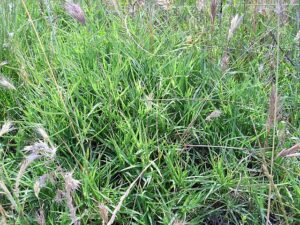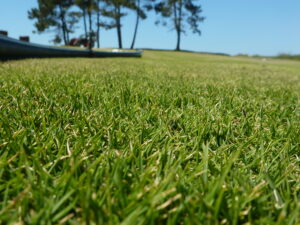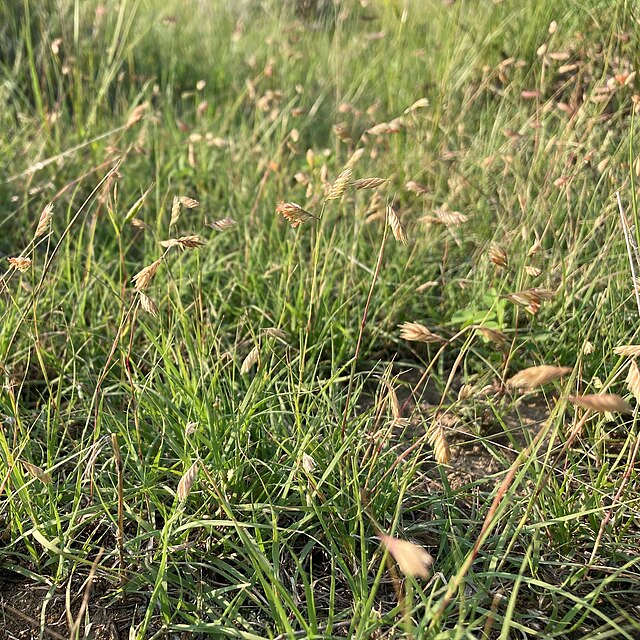You need to know the type of grass, factor in seasonal weather changes, and the overall health of your lawn in order to determine how often it should be mowed. We hope to provide you with knowledge if lawn care and help you make the most informed decisions on how often to mow the lawn.
Please refer to the following list of species to determine which type of grass is growing in the yard. These are some of the most common residential grasses in the Dallas-Fort Worth metroplex:
Bermuda Grass:

This is a very hardy species and the most common in our area. It requires full sun and does well in high temperatures, making it ideal for open yards. Bermuda grass needs regular mowing, watering, and occasional dethatching to maintain its appearance.
St. Augustine Grass:

You can identify this species by its broad, flat blades and bright green color. St. Augustine needs plenty of moisture and performs best with regular watering and feeding. It is susceptible to certain pests and diseases, so routine maintenance is crucial.
Zoysia:

Zoysia grows slowly and requires less mowing than Bermuda or St. Augustine. However, it does need periodic dethatching and benefits from regular watering and fertilization during active growth periods. It has a fine texture and can create a thick, carpet-like lawn.
Buffalo Grass:

This species is native to Texas and is therefor well suited to a hot dry climate such as it often is in Denton. It has a fine texture and a blue-green hue, thriving in open, sunny environments. Great option for eco-friendly lawns as well as low-maintenance care.
Once you have analyzed your lawn and know the species of grass that is growing, you will be able to adjust your mowing schedule accordingly. Heres a link to another resource if you are still unsure of this step or are curious and would like to do more of your own research. https://lawnlove.com/blog/guide-to-grass-types/
Growth Rate and Height
Industry standards follow the practice of a “one-third” rule: Never remove more than one-third of the grass blade length at a time. Cutting more than this can stress the grass. Scalping your lawn especially in slower growing seasons can increase vulnerability to weeds, expose the soil to too much sun, and leave your yard more seceptible to pests or fungal infections.
Adjust your mowing schedule based on how quickly your lawn grows. Frequent rain, fertilization, and warm weather can speed up growth, necessitating more frequent mowing. Different grass types have optimal mowing heights. Always set your mower to the appropriate height for your specific grass type.
Residential/commercial landscapers typically offer weekly and biweekly service options to accommodate different lawn care needs. Weekly mowing is ideal for lawns, ensuring the grass stays healthy and well-maintained. Biweekly services are suitable for slower-growing grass or during less active growth periods. By providing these options, Hold Fast offers a flexible approach to customers that suits your needs for Spring, Summer, Fall, and Winter!

